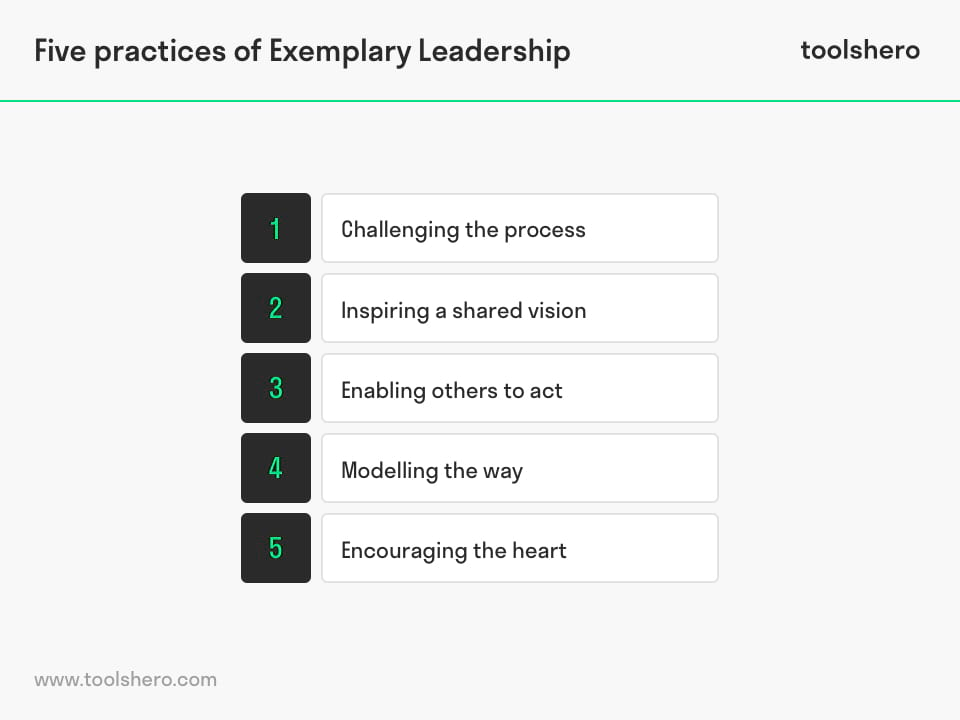Functional Leadership Model

Functional Leadership Model: this article explains the Functional Leadership Model in a practical way. Next to what it is, this article also highlights the theory and the concept of Exemplary Leadership. After reading, you’ll understand the basics of this Leadership Theory. Enjoy reading!
What is a Functional Leadership Model?
The Functional Leadership Model is one of the models that have been developed for defining leadership. A lot of research has been done into leadership, going back decades, and many have tried to define what distinguishes an authentic leader from the masses.
The result is a large collection of theories. These are then categorised according to the perspective of the study. Common leadership studies include trait theories, behavioural theories, contingency theories, transformational theories, transactional theories, the great man theory, and functional theories.
Functional leadership models are mostly aimed at what the leader should do and are used to describe functions and situations in which leaders are expected to take their responsibility as a leader.
There are various functional leadership models, such as the Action Centered Leadership model (ACL) by John Adair, and the five leadership practices by Kouzes and Posner.
Functional Leadership Theory is developed by studying successful leaders and identifying certain actions and behaviours. Afterwards, the results are analysed for correlations that show what exactly it is that the leader does in advance of the success.
Functional Leadership Theory
Functional Leadership Theory is a theory for identifying specific behaviour by leaders that, it is expected, contributes to the efficacy of the organisation as a whole or part of it. The core of the theory is that the leader’s most important task is to ensure that everything the group needs is provided.
This means a leader is successful at leadership and at their task when they successfully contribute to the group’s efficacy and cohesion. According to Functional Leadership Theory, closely connected to the functional leadership model, leadership is not fully dependent on any one person. According to the model, leadership is based on a sequence of behaviours by the group.
This sequence of behaviours is what accomplishes things and fulfils tasks. Each member of the group or organisation can behave a certain way, perform actions, so everyone should be able to take on a leading role. In practice, however, we find that different people have different qualities, and that a set of characteristic qualities is required for leadership.
John Adair’s Action Centered Leadership
One of the most popular and influential theories about functional leadership is John Adairs Action Centered Leadership. The model is composed of three overlapping circles. Each of the three circles represents a different area of leadership functions.
Functional Leadership Model : Task
The task or challenge at hand must be carried out by the group, and cannot be completed by one person.
Functional Leadership Model : Team
The team can only achieve outstanding results if all individuals within that team are sufficiently developed.
Individual
The individuals are waiting for a motivating and challenging task to carry out.
The model looks into how the needs described above may be provided for. In most organisations, most employees’ needs are provided for by the manager, but in other organisations, individuals themselves take on a leading role, even when they don’t have a formal position of leadership.
Exemplary Leadership
James Kouzes and Barry Posner introduced a remarkable version of the functional leadership model in their 1987 book ‘The Leadership Challenge’.
It describes more than Aldair’s model, and is aimed at leaders at a high level, such as CEOs. The five practices of elementary leadership change the abstract concept of leadership into a set of easily understandable behaviours and working methods.
The model was validated by the Leadership Practices Inventory (LPI). Current research consistently confirms the effectiveness of the five practices of exemplary leadership, as well as their relation to the effectiveness of leaders.
Kouzes and Posner summarise their study and results by way of five practices.

Figure 1 – five practices of elementary leadership
1. Challenging the Process
The first of the five practices of leadership is challenging the process. This means leaders need to actively look for possibilities for changing the status quo.
They do this by looking for innovative ways to make the organisation more effective or efficient by performing experiments and taking risks. Disappointments and hardship are used as learning opportunities. Change is not easy, which is why it’s not easy to create an atmosphere in which the status quo is easily changed.
2. Inspiring a Shared Vision
Leaders should believe they can make a difference. A good leader has a clear vision of the future, which outlines a unique and ideal image of what the organisation could become in the future.
They get the rest of the organisation to join the development through their magnetic pull and silent persuasion. Silent persuasion occurs when opportunities or benefits of the outlined future become apparent without being explicitly stated. This realisation convinces people.
3. Enabling Others to Act
According to the functional leadership model of exemplary leadership, good leaders enable effective cooperation and build vibrant teams. Each member of the organisation is actively involved with the daily goings-on and everyone respects one another. Together, everyone strives for a relaxed, productive, and confidential atmosphere. This allows everyone to reinforce one another, creating a feeling of capability and strength. It gives the team more self-confidence.
4. Modelling the Way
Leaders are also concerned with the way in which everyone involved in the organisation is treated, as well as the way in which objectives are pursued.
In short, they set the standard for others and present themselves as a good example for others to follow. They also set the example for dealing with change. In case of large-scale changes, small objectives are set, so that achieving these objectives feels like victory.
Effective leaders also unravel bureaucracy and develop a flexible, internal solution for any problems found. In the event that employees are not quite sure which course they should follow, leaders ensure they are provided with guidance.
5. Encouraging the Heart
In order to realise great things with the organisation, hard work is required. In order to ensure the employees maintain enough hope and determination throughout the process, the leader should regularly praise the employees for their contributions. In a team, employees share the rewards, which includes celebrating performances.
Functional Leadership Model summary
There have been various studies on leadership that define exactly which qualities a good leader should have, or which strategy they should follow.
Functional leadership is only about the activities a leader needs to carry out in order to be effective. John Aldair’s functional leadership model visualises the interaction of team, task, and individual by way of three overlapping circles. Another model that describes this form of leadership is that of the five practices of exemplary leadership, developed by Kouzes and Posner.
Now it’s your turn
What do you think? Do you recognise the explanation about the functional leadership model? What do you think are the pros and cons of these kind of models? Which group of leadership theories interests you? Do you think action-centred leadership is effective? Do you have any tips or additional comments?
Share your experience and knowledge in the comments box below.
More information
- Chemers, M. M. (2000). Leadership research and theory: A functional integration. Group Dynamics: Theory, research, and practice, 4(1), 27.
- Morgeson, F. P., DeRue, D. S., & Karam, E. P. (2010). Leadership in teams: A functional approach to understanding leadership structures and processes. Journal of management, 36(1), 5-39.
- John, A. (1973). Action Centered Leadership.
How to cite this article:
Janse, B. (2019). Functional Leadership Model. Retrieved [insert date] from Toolshero: https://www.toolshero.com/leadership/functional-leadership-model/
Original publication date: 12/09/2019 | Last update: 11/08/2023
Add a link to this page on your website:
<a href=”https://www.toolshero.com/leadership/functional-leadership-model/”>Toolshero: Functional Leadership Model</a>












